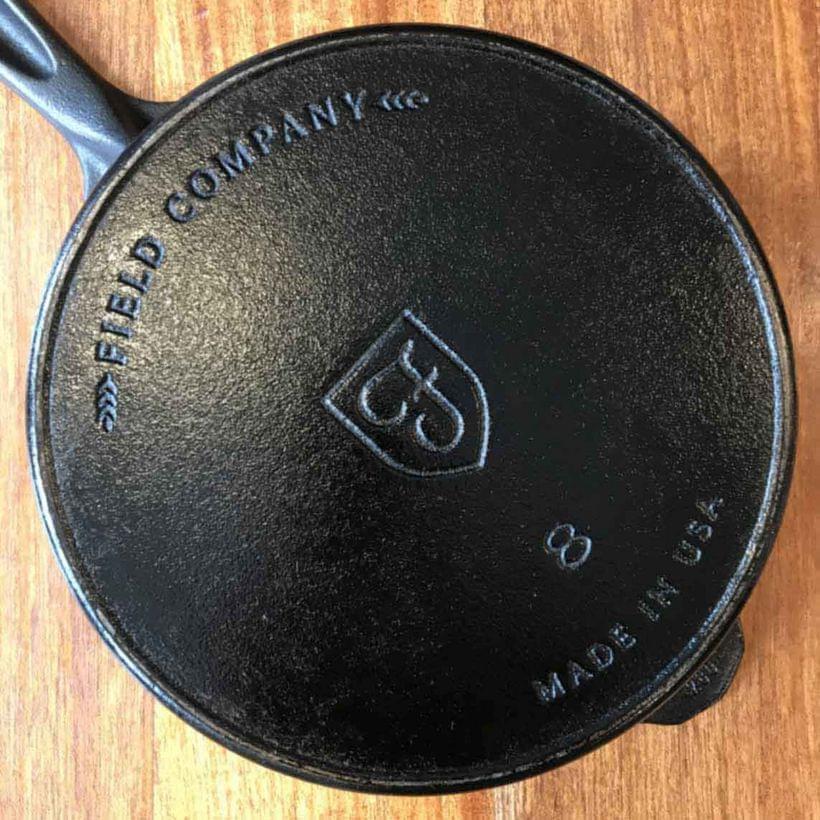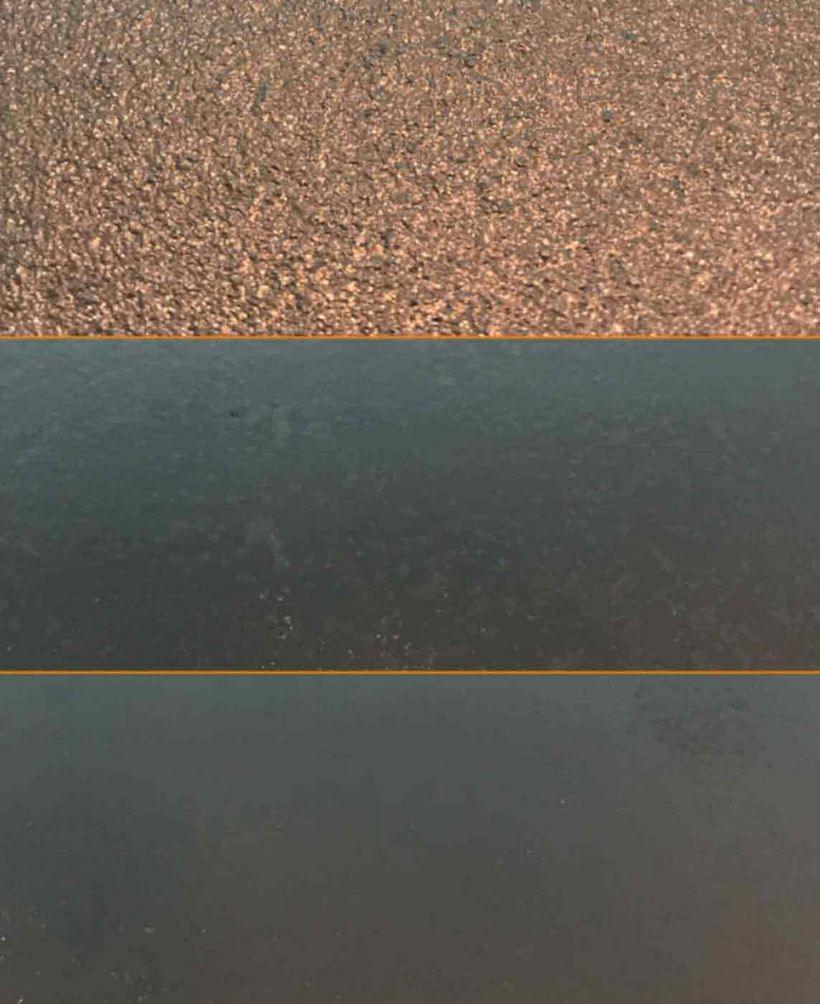The Field Skillet

The old Marquis Home Renovation rule was “buy the cheapest version of something, and if you manage to use it until it breaks, replace it with the best one money can buy.” It’s a pretty good rule for tape measures and whatnot, but a better one writ larger.
For the most part—but not always, sure—that rule has saved me from this maybe-familiar pattern:
- Decide to get, like, really into a certain thing. Like really really.
- Go on a related-gear-buying spree.
- Lose interest in the thing before the packages even arrive.
I’m not saying I haven’t “invested” in more than one pair of running shoes for a 5K I’ll never actually do, but y’know, the rule helps. On day two of “I think— I think I’m gonna go all-in on boxing,” I could’ve rushed out and bought $180 gloves, a fitness tracker watch, one of those goofy faux high-altitude-simulating masks, and the rest of the glowing, beeping machinery from Ivan Drago’s training montage. On day three, I could’ve done five push-ups, got hit in the head one time, and decided “whoops, this is not for me, it turns out people are trying to hit my head.” It stuck, though, despite all reason. So, when the seams finally gave out, I traded in my $30-from-Target gloves for a pair of Cleto Reyes.
Now, I like cast iron. I like it the way I like my bike. It’s simple, it’s heavy, and it’ll survive until the heat death of the universe. My first cast-iron was an Emeril-Lagasse-branded thing from a yard sale; it worked fine. It got lost moving from one apartment to the next, but y’know, I’d gotten my milage out of it. So, I upgraded to a brand new Lodge, which I think, brand new, cost less than I paid for the yard sale Emeril pan.
This was tremendously dissatisfying to my JRPG-driven lizard brain, which is certain that you can draw a direct line between the cost of a piece of equipment and the stats it possesses. This was a decade and a half ago. Up until recently, I used that same Lodge maybe once a week. I still have it, I still use it, and in a lot of ways it still can’t be beat.
I first saw the Kickstarter for the No. 8 Field Skillet when it was somewhere around one million—million—dollars. I was sorely tempted; the JRPG lizard brain flared, the way it had seeing dozens of Kickstarters for chef’s knives using Very Special Steel, photographed against chalk-painted faux-aged-barn-wood tables. But I fought it off; I had my tried and true Lodge, and with it, I had transcended such petty, Earthly wants.
A year or so later, a friend sent me a message asking if I wanted to buy the one they’d been shipped, still brand new in the box—and yep, yeah, for sure.
The story doesn’t end the way you might be expecting, here. I use my Field Skillet maybe once a week, now. It’s my go-to pan. I don’t like everything about it; there are compromises. In exchange for being… maybe two thirds of the weight of a similarly-sized traditional cast iron, it doesn’t retain heat as well. The Field Company readily cops to that in their marketing, and it’s a trade off I’m generally willing to make in exchange for something so much more maneuverable. It doesn’t have a pour spout, which is a thing I have literally never used on a cast-iron; I don’t miss it.
There’s one other compromise I keep running up against, though; it’s not a deal-breaker for me, by any stretch, but it is worth keeping in mind.
The Gritty Details
If you’re looking at a cooking blog, I don’t need a bunch of preamble about how cast irons improve with time.
A lot of it is steeped in, let’s say, legend—“never wash it,” or “it retains and adds flavors” are a couple that seem to spring up a lot. To both points, let me just say: wash your damn pans. Don’t take steel wool to it and don’t leave it soaking, but you can use dishsoap for Chris’sakes—the polymerized oils that make up a cast iron’s seasoning aren’t going to instantly dissolve because of a little Dawn. If it needs to be scrubbed out, skip the special magic chain-mail cast iron scrubber thing and throw a healthy pinch of coarse salt in there instead; it’ll scrape away anything stuck without hurting the finish. Assuming you’re not cooking anything acid-heavy in an iron—and thus “reactive”—pan, it isn’t gonna add any flavors unless you left old food in it. Your dish could probably do without those particular flavors.
They do get better with age, though. That’s because of the pan’s seasoning—which, word-wise, is maybe the reason for the “makes food taste better” lore. What builds up on the pan isn’t food grime, but polymerized oils—the result of oils drying on the pan. It’s the same principle as oils in woodworking—a “drying oil,” like linseed, eventually gives up its moisture and hardens into a thin, plastic-like finish.
Using a cast-iron pan contibutes to this seasoning—heating oils in it will dry them, and leave a tiny film of polymerized oil behind. Likewise, oiling a pan after cleaning and drying it.
The difference between oiling wood and oiling iron is that oil soaks into wood. Even wood sanded to a glassy-smooth finish will provide oils with plenty of purchase. Not so much, with iron—those microscopic layers of polymerized oil sit on the surface of the cast iron pan. The more textured that surface is, the more purchase the finish will find; and the more it will resist chipping and flaking away.
The big compromise between my Lodge and the Field Skillet is in how they hold onto their seasoning.

The finish on my Lodge, originally looked like like the close-up of the brand new Royal Dutch skillet pictured here—pebbled. If I cracked an egg into either of these skillets, brand new, I’d have a mess on my hands—the same grit that allows the seasoning to find purchase would allow the egg to find purchase. Out of the box, these skillets are sticky.
Over time, the seasoning builds up, and the pits fill in. My fifteen year old Lodge is nearly as smooth as the surface of the Field Skillet. It’ll still lose a bit of seasoning every once in a while—figure each layer I add is adhering to a progressively smoother surface, so it might not stick quite as well. But when a layer or two does chip off, it reveals, well, more seasoning.
The inside of the Field Skillet is machined smooth—meaning, you take it out of the box and it’s already practically non-stick; no muss, no fuss. But because it’s so smooth, the seasoning doesn’t seem to adhere as well; when it chips, it chips to bare metal. In my case, it’s particularly bad—I’d built up my seasoning using food-grade linseed (or “flaxseed”) oil, which has a high rate of polymerization—but results in a thicker layer of seasoning than you might get with, say, vegetable oil, and a few thick layers of seasoning will give up more easily than many thinner layers. At some point, I’ll steel wool the Field Skillet back down to bare metal and start over with vegetable oil.
So, that’s the big trade off. In the end, the Field skillet is a little fussier, and requires a little more upkeep, in exchange for a level of non-stickiness that it took a decade and a half to achieve with my Lodge. It’s still a tank, albeit a lighter and more nimble one—and because of that, it sees a little more day-to-day use than my Lodge.
But there’s history in that old skillet. It’s seasoned—not with food-grime, and not just with microscopic layers of polymerized oils, but with all the times I set off a smoke detector with smoking oil. My Lodge sucked at cooking when I sucked at it, and it’s gotten better at it as I have. That’s a special kind of tool, and it makes for an unfair comparison. So, if you’ve got a decade to put into it, by all means, buy a Lodge—they cost like twenty bucks.
But the fact that the Field Skillet can, after only a year or two of use, stack up to something with more than a decade of “experience” is a testament to it. It’s a good skillet, by any concevable measure; keep it clean and well-oiled and you’ll get a ton of use out of it. I have, and do.